The chemical compatibility and resistance of stainless steel depends on the specific type, grade of steel and the environment with which it comes into contact. There are many different types of stainless steel, each with its own chemical composition and properties. The most common grades include AISI 304 and AISI 316.
It is very important to select a type of stainless steel that is chemically compatible with the environment it will be in contact with. If you are unsure which type of stainless steel is suitable for your application, it is recommended to consult a specialist.
In addition to the chemical composition, the stability of stainless steel is also influenced by factors such as:
- Temperature: stainless steel becomes less resistant to corrosion as temperature increases.
- Concentration: more concentrated chemicals are more likely to corrode stainless steel than diluted ones.
- Flow rate: fast flowing chemicals can corrode stainless steel faster than slow flowing chemicals.
- Tension: stainless steel under tensioned is more susceptible to corrosion than non-tensioned steel.
It is important to consider all of these factors when selecting and using stainless steel.
- A - excellent;
- B - good;
- C - average or poor;
- D - not recommended.
| Chemical substance | AISI 304 | AISI 316 |
| Acetaldehyde | А | А |
| Acetamide | B | A |
| Acetate Solvent | A | A |
| Acetic Acid | D | B |
| Acetic Acid 20% | B | A |
| Acetic Acid 80% | D | B |
| Acetic Acid, Glacial | C | A |
| Acetic Anhydride | B | A |
| Acetone | A | A |
| Acetyl Bromide | - | - |
| Acetyl Chloride (dry) | A | A |
| Acetylene | A | A |
| Acrylonitrile | A | A |
| Adipic Acid | A | A |
| Alcohols: Amyl | A | A |
| Alcohols: Benzyl | B | B |
| Alcohols: Butyl | A | A |
| Alcohols: Diacetone | A | A |
| Alcohols: Ethyl | A | A |
| Alcohols: Hexyl | A | A |
| Alcohols: Isobutyl | A | A |
| Alcohols: Isopropyl | B | B |
| Alcohols: Methyl | A | A |
| Alcohols: Octyl | A | A |
| Alcohols: Propyl | A | A |
| Aluminum Chloride | B | B |
| Aluminum Chloride 20% | D | C |
| Aluminum Fluoride | D | D |
| Aluminum Hydroxide | A | C |
| Aluminum Nitrate | A | A |
| Aluminum Potassium Sulfate 10% | A | A |
| Aluminum Potassium Sulfate 100% | D | B |
| Aluminum Sulfate | B | B |
| Alums | - | A |
| Amines | A | A |
| Ammonia 10% | A | A |
| Ammonia Nitrate | A | A |
| Ammonia, anhydrous | A | A |
| Ammonia, liquid | B | A |
| Ammonium Acetate | B | A |
| Ammonium Bifluoride | D | B |
| Ammonium Carbonate | B | B |
| Ammonium Caseinate | - | A |
| Ammonium Chloride | C | B |
| Ammonium Hydroxide | A | A |
| Ammonium Nitrate | A | A |
| Ammonium Oxalate | A | A |
| Ammonium Persulfate | A | B |
| Ammonium Phosphate, Dibasic | B | C |
| Ammonium Phosphate, Monobasic | B | C |
| Ammonium Phosphate, Tribasic | B | B |
| Ammonium Sulfate | B | B |
| Ammonium Sulfite | B | B |
| Ammonium Thiosulfate | - | A |
| Amyl Acetate | A | A |
| Amyl Chloride | A | A |
| Aniline | A | B |
| Aniline Hydrochloride | D | D |
| Antifreeze | - | A |
| Antimony Trichloride | D | D |
| Aqua Regia (80% HCl, 20% HNO3) | D | D |
| Arochlor 1248 | B | B |
| Aromatic Hydrocarbons | - | C |
| Arsenic Acid | A | A |
| Arsenic Salts | - | - |
| Asphalt | B | A |
| Chemical substance | AISI 304 | AISI 316 |
| Barium Carbonate | B | B |
| Barium Chloride | A | A |
| Barium Cyanide | A | A |
| Barium Hydroxide | B | B |
| Barium Nitrate | B | B |
| Barium Sulfate | B | B |
| Barium Sulfide | B | B |
| Beer | A | A |
| Beet Sugar Liquids | A | A |
| Benzaldehyde | B | B |
| Benzene | B | B |
| Benzene Sulfonic Acid | B | B |
| Benzoic Acid | B | B |
| Benzol | A | A |
| Benzonitrile | D | D |
| Benzyl Chloride | C | B |
| Bleaching Liquors | - | - |
| Borax (Sodium Borate) | A | A |
| Boric Acid | B | A |
| Brewery Slop | - | A |
| Bromine | D | D |
| Butadiene | A | A |
| Butane | A | A |
| Butanol (Butyl Alcohol) | A | A |
| Butter | C | A |
| Buttermilk | A | A |
| Butyl Amine | - | A |
| Butyl Ether | - | A |
| Butyl Phthalate | B | B |
| Butylacetate | B | A |
| Butylene | A | A |
| Butyric Acid | B | B |
| Calcium Bisulfate | - | A |
| Calcium Bisulfide | B | B |
| Calcium Bisulfite | B | A |
| Calcium Carbonate | A | B |
| Calcium Chlorate | - | - |
| Calcium Chloride | C | B |
| Calcium Hydroxide | B | B |
| Calcium Hypochlorite | C | B |
| Calcium Nitrate | C | B |
| Calcium Oxide | A | A |
| Calcium Sulfate | B | B |
| Calgon | A | A |
| Cane Juice | A | A |
| Carbolic Acid (Phenol) | B | B |
| Carbon Bisulfide | A | B |
| Carbon Dioxide (dry) | A | A |
| Carbon Dioxide (wet) | A | A |
| Carbon Disulfide | A | B |
| Carbon Monoxide | A | A |
| Carbon Tetrachloride | B | B |
| Carbon Tetrachloride (dry) | B | B |
| Carbon Tetrachloride (wet) | A | A |
| Carbonated Water | A | A |
| Carbonic Acid | A | A |
| Catsup | A | A |
| Chloric Acid | D | C |
| Chlorinated Glue | - | A |
| Chlorine (dry) | A | B |
| Chlorine Water | C | C |
| Chlorine, Anhydrous Liquid | C | C |
| Chloroacetic Acid | B | A |
| Chlorobenzene (Mono) | A | B |
| Chlorobromomethane | - | - |
| Chloroform | A | A |
| Chlorosulfonic Acid | D | B |
| Chocolate Syrup | A | A |
| Chemical substance | AISI 304 | AISI 316 |
| Chromic Acid 10% | B | B |
| Chromic Acid 30% | B | B |
| Chromic Acid 5% | B | A |
| Chromic Acid 50% | C | B |
| Chromium Salts | - | - |
| Cider | A | A |
| Citric Acid | B | A |
| Citric Oils | A | A |
| Clorox® (Bleach) | A | A |
| Coffee | A | A |
| Copper Chloride | D | D |
| Copper Cyanide | B | B |
| Copper Fluoborate | D | D |
| Copper Nitrate | A | A |
| Copper Sulfate >5% | B | B |
| Copper Sulfate 5% | B | B |
| Cream | A | A |
| Cresols | A | A |
| Cresylic Acid | A | A |
| Cupric Acid | D | B |
| Cyanic Acid | A | A |
| Cyclohexane | A | A |
| Cyclohexanone | A | A |
| Detergents | A | A |
| Diacetone Alcohol | B | B |
| Dichlorobenzene | - | B |
| Dichloroethane | B | B |
| Diesel Fuel | A | A |
| Diethyl Ether | B | B |
| Diethylamine | A | A |
| Diethylene Glycol | A | A |
| Dimethyl Aniline | B | B |
| Dimethyl Formamide | A | B |
| Diphenyl | B | B |
| Diphenyl Oxide | B | A |
| Dyes | A | A |
| Epsom Salts (Magnesium Sulfate) | A | B |
| Ethane | A | A |
| Ethanol | A | A |
| Ethanolamine | A | A |
| Ether | A | A |
| Ethyl Acetate | B | B |
| Ethyl Benzoate | - | - |
| Ethyl Chloride | A | A |
| Ethyl Ether | B | B |
| Ethyl Sulfate | D | D |
| Ethylene Bromide | A | A |
| Ethylene Chloride | B | B |
| Ethylene Chlorohydrin | B | B |
| Ethylene Diamine | B | B |
| Ethylene Dichloride | B | B |
| Ethylene Glycol | B | B |
| Ethylene Oxide | B | B |
| Fatty Acids | B | A |
| Ferric Chloride | D | D |
| Ferric Nitrate | B | B |
| Ferric Sulfate | B | A |
| Ferrous Chloride | D | D |
| Ferrous Sulfate | B | B |
| Fluoboric Acid | B | B |
| Fluorine | C | A |
| Fluosilicic Acid | C | B |
| Formaldehyde 100% | C | A |
| Formaldehyde 40% | A | A |
| Formic Acid | B | A |
| Freon 113 | - | - |
| Freon 12 | B | B |
| Freon 22 | A | A |
Stainless steel is a strong and durable material with a wide range of applications. Its chemical resistance makes it ideal for use in environments where other metals may corrode.
Stainless steel has high resistance to a wide range of chemicals, including acids, alkalis, salts and organic compounds. However, it is important to note that not all types of stainless steel are equally resistant to all chemicals. The type of stainless steel that is most suitable for a particular application will depend on the type of chemicals it will encounter, as well as the operating conditions.
It is important to consider all factors when selecting and using stainless steel.
- A - excellent;
- B - good;
- C - average or poor;
- D - not recommended.
| Chemical substance | AISI 304 | AISI 316 |
| Freon TF | A | A |
| Freon® 11 | A | A |
| Fruit Juice | A | A |
| Fuel Oils | A | A |
| Furan Resin | A | A |
| Furfural | A | B |
| Gallic Acid | A | B |
| Gasoline (high-aromatic) | A | A |
| Gasoline, leaded, ref. | A | A |
| Gasoline, unleaded | A | A |
| Gelatin | A | A |
| Glucose | A | A |
| Glue, P.V.A. | A | A |
| Glycerin | A | A |
| Glycolic Acid | A | A |
| Gold Monocyanide | A | A |
| Grape Juice | A | A |
| Grease | - | A |
| Heptane | A | A |
| Hexane | A | A |
| Honey | A | A |
| Hydraulic Oil | A | A |
| Hydraulic Oil (Synthetic) | A | A |
| Hydrazine | A | A |
| Hydrobromic Acid 100% | D | D |
| Hydrobromic Acid 20% | D | D |
| Hydrochloric Acid 100% | D | D |
| Hydrochloric Acid 20% | D | D |
| Hydrochloric Acid 37% | D | D |
| Hydrochloric Acid, Dry Gas | D | D |
| Hydrocyanic Acid | B | A |
| Hydrocyanic Acid (Gas 10%) | - | - |
| Hydrofluoric Acid 100% | D | D |
| Hydrofluoric Acid 20% | D | B |
| Hydrofluoric Acid 50% | D | D |
| Hydrofluoric Acid 75% | D | D |
| Hydrofluosilicic Acid 100% | D | D |
| Hydrofluosilicic Acid 20% | C | B |
| Hydrogen Gas | A | A |
| Hydrogen Peroxide 10% | B | A |
| Hydrogen Peroxide 100% | B | B |
| Hydrogen Peroxide 30% | B | A |
| Hydrogen Peroxide 50% | B | A |
| Hydrogen Sulfide (aqua) | C | A |
| Hydrogen Sulfide (dry) | C | A |
| Hydroquinone | B | B |
| Hydroxyacetic Acid 70% | - | - |
| Ink | C | C |
| Iodine | D | D |
| Iodine (in alcohol) | - | - |
| Iodoform | A | A |
| Isooctane | A | A |
| Isopropyl Acetate | C | A |
| Isopropyl Ether | A | A |
| Isotane | - | - |
| Jet Fuel (JP3, JP4, JP5) | A | A |
| Kerosene | A | A |
| Ketones | A | A |
| Lacquer Thinners | A | A |
| Lacquers | A | A |
| Lactic Acid | B | B |
| Lard | A | A |
| Latex | A | A |
| Lead Acetate | B | B |
| Lead Nitrate | B | B |
| Lead Sulfamate | C | C |
| Ligroin | - | A |
| Lime | A | A |
| Chemical substance | AISI 304 | AISI 316 |
| Linoleic Acid | B | A |
| Lithium Chloride | A | A |
| Lithium Hydroxide | B | B |
| Lubricants | A | A |
| Lye: Ca(OH)2 Calcium Hydroxide | B | B |
| Lye: KOH Potassium Hydroxide | B | A |
| Lye: NaOH Sodium Hydroxide | B | B |
| Magnesium Bisulfate | A | A |
| Magnesium Carbonate | B | B |
| Magnesium Chloride | D | D |
| Magnesium Hydroxide | B | A |
| Magnesium Nitrate | B | B |
| Magnesium Oxide | A | A |
| Magnesium Sulfate (Epsom Salts) | A | B |
| Maleic Acid | A | B |
| Maleic Anhydride | A | A |
| Malic Acid | A | A |
| Manganese Sulfate | B | B |
| Mash | A | A |
| Mayonnaise | C | A |
| Melamine | - | D |
| Mercuric Chloride (dilute) | D | D |
| Mercuric Cyanide | C | C |
| Mercurous Nitrate | A | A |
| Mercury | A | A |
| Methane | A | A |
| Methanol (Methyl Alcohol) | A | A |
| Methyl Acetate | A | B |
| Methyl Acetone | A | A |
| Methyl Acrylate | A | - |
| Methyl Alcohol 10% | A | A |
| Methyl Bromide | A | A |
| Methyl Butyl Ketone | A | A |
| Methyl Cellosolve | B | B |
| Methyl Chloride | A | A |
| Methyl Dichloride | - | - |
| Methyl Ethyl Ketone | A | A |
| Methyl Ethyl Ketone Peroxide | - | - |
| Methyl Isobutyl Ketone | B | B |
| Methyl Isopropyl Ketone | A | A |
| Methyl Methacrylate | B | B |
| Methylamine | A | A |
| Methylene Chloride | B | B |
| Milk | A | A |
| Mineral Spirits | A | A |
| Molasses | A | A |
| Monochloroacetic acid | A | A |
| Monoethanolamine | A | A |
| Morpholine | - | -A- |
| Motor oil | A | A |
| Mustard | A | A |
| Naphtha | A | A |
| Naphthalene | A | A |
| Natural Gas | A | A |
| Nickel Chloride | D | C |
| Nickel Nitrate | B | B |
| Nickel Sulfate | B | B |
| Nitrating Acid (<15% HNO3) | C | D |
| Nitrating Acid (>15% H2SO4) | C | C |
| Nitrating Acid (<1% Acid) | C | A |
| Nitrating Acid (<15% H2SO4) | C | C |
| Nitric Acid (20%) | A | A |
| Nitric Acid (50%) | A | A |
| Nitric Acid (5-10%) | A | A |
| Nitric Acid (Concentrated) | A | A |
| Nitrobenzene | B | B |
| Nitrogen Fertilizer | - | - |
| Nitromethane | A | A |
| Chemical substance | AISI 304 | AISI 316 |
| Nitrous Acid | B | B |
| Nitrous Oxide | B | B |
| Oils: Aniline | A | A |
| Oils: Anise | - | A |
| Oils: Bay | - | A |
| Oils: Bone | - | A |
| Oils: Castor | A | A |
| Oils: Cinnamon | A | A |
| Oils: Citric | A | A |
| Oils: Clove | A | A |
| Oils: Coconut | A | A |
| Oils: Cod Liver | A | A |
| Oils: Corn | A | A |
| Oils: Cottonseed | A | A |
| Oils: Creosote | B | B |
| Oils: Diesel Fuel (20, 30, 40, 50) | A | A |
| Oils: Fuel (1, 2, 3, 5A, 5B, 6) | A | A |
| Oils: Ginger | D | D |
| Oils: Hydraulic Oil (Petro) | A | A |
| Oils: Hydraulic Oil (Synthetic) | A | A |
| Oils: Lemon | A | A |
| Oils: Linseed | A | A |
| Oils: Mineral | A | A |
| Oils: Olive | A | A |
| Oils: Orange | A | A |
| Oils: Palm | A | A |
| Oils: Peanut | A | A |
| Oils: Peppermint | A | A |
| Oils: Pine | A | A |
| Oils: Rapeseed | A | A |
| Oils: Rosin | A | A |
| Oils: Sesame Seed | A | A |
| Oils: Silicone | A | A |
| Oils: Soybean | A | A |
| Oils: Sperm (whale) | A | A |
| Oils: Tanning | A | A |
| Oils: Transformer | A | A |
| Oils: Turbine | A | A |
| Oleic Acid | A | A |
| Oleum 100% | A | A |
| Oleum 25% | B | B |
| Oxalic Acid (cold) | B | A |
| Ozone | B | A |
| Palmitic Acid | B | A |
| Paraffin | A | A |
| Pentane | C | C |
| Perchloric Acid | C | C |
| Perchloroethylene | B | A |
| Petrolatum | A | A |
| Petroleum | A | A |
| Phenol (10%) | B | B |
| Phenol (Carbolic Acid) | B | B |
| Phosphoric Acid (>40%) | D | D |
| Phosphoric Acid (crude) | D | B |
| Phosphoric Acid (molten) | - | C |
| Phosphoric Acid (<40%) | D | C |
| Phosphoric Acid Anhydride | - | - |
| Phosphorus | A | A |
| Phosphorus Trichloride | A | A |
| Photographic Developer | A | A |
| Photographic Solutions | D | - |
| Phthalic Acid | B | A |
| Phthalic Anhydride | A | A |
| Picric Acid | B | B |
| Potash (Potassium Carbonate) | B | B |
| Potassium Bicarbonate | B | B |
| Potassium Bromide | B | B |
| Potassium Chlorate | B | B |
It is important to consider the conditions in which the stainless steel will be used. This includes:
- Chemical contact: what chemicals will the steel come into contact with?
- Temperature: at what temperature will the steel be used?
- Pressure: what pressure will the steel be subjected to?
- Flow rate: how fast will the liquid flow through the steel?
These factors can affect the corrosion resistance of stainless steel and its overall performance.
It is important to consider factors when selecting and using stainless steel.
- A - excellent;
- B - good;
- C - average or poor;
- D - not recommended.
| Chemical substance | AISI 304 | AISI 316 |
| Potassium Chloride | B | A |
| Potassium Chromate | B | B |
| Potassium Cyanide Solutions | B | B |
| Potassium Dichromate | B | B |
| Potassium Ferricyanide | B | B |
| Potassium Ferrocyanide | B | B |
| Potassium Hydroxide (Caustic Potash) | B | A |
| Potassium Hypochlorite | C | B |
| Potassium Iodide | A | A |
| Potassium Nitrate | B | B |
| Potassium Oxalate | B | B |
| Potassium Permanganate | B | B |
| Potassium Sulfate | B | A |
| Potassium Sulfide | B | B |
| Propane (liquefied) | A | A |
| Propylene | B | A |
| Propylene Glycol | B | B |
| Pyridine | A | A |
| Pyrogallic Acid | B | B |
| Resorcinal | - | - |
| Rosins | A | A |
| Rum | A | A |
| Rust Inhibitors | A | A |
| Salad Dressings | A | A |
| Salicylic Acid | B | B |
| Salt Brine (NaCl saturated) | B | A |
| Sea Water | C | C |
| Shellac (Bleached) | A | A |
| Shellac (Orange) | A | A |
| Silicone | A | A |
| Silver Bromide | D | D |
| Silver Nitrate | B | B |
| Soap Solutions | A | A |
| Soda Ash (see Sodium Carbonate) | A | A |
| Sodium Acetate | B | B |
| Sodium Aluminate | A | A |
| Sodium Benzoate | - | - |
| Sodium Bicarbonate | A | A |
| Sodium Bisulfate | D | C |
| Sodium Bisulfite | B | B |
| Sodium Borate (Borax) | B | B |
| Sodium Bromide | C | C |
| Sodium Carbonate | A | A |
| Sodium Chlorate | A | B |
| Sodium Chloride | B | B |
| Sodium Chromate | B | B |
| Sodium Cyanide | A | B |
| Sodium Ferrocyanide | B | B |
| Sodium Fluoride | D | D |
| Sodium Hydrosulfite | - | - |
| Sodium Hydroxide (20%) | B | B |
| Sodium Hydroxide (50%) | B | B |
| Sodium Hydroxide (80%) | C | B |
| Sodium Hypochlorite (<20%) | C | C |
| Sodium Hypochlorite (100%) | D | D |
| Sodium Hyposulfate | A | A |
| Sodium Metaphosphate | A | A |
| Sodium Metasilicate | A | A |
| Sodium Nitrate | B | B |
| Sodium Perborate | B | B |
| Sodium Peroxide | A | A |
| Sodium Polyphosphate | B | B |
| Sodium Silicate | A | B |
| Sodium Sulfate | B | B |
| Sodium Sulfide | B | D |
| Sodium Sulfite | B | A |
| Sodium Tetraborate | A | A |
| Sodium Thiosulfate (hypo) | A | B |
| Chemical substance | AISI 304 | AISI 316 |
| Sorghum | A | A |
| Soy Sauce | A | A |
| Stannic Chloride | D | D |
| Stannic Fluoborate | - | A |
| Stannous Chloride | C | A |
| Starch | A | A |
| Stearic Acid | B | A |
| Stoddard Solvent | A | A |
| Styrene | A | A |
| Sugar (Liquids) | A | A |
| Sulfate (Liquors) | B | B |
| Sulfur Chloride | D | D |
| Sulfur Dioxide | D | A |
| Sulfur Dioxide (dry) | D | A |
| Sulfur Hexafluoride | - | - |
| Sulfur Trioxide | A | C |
| Sulfur Trioxide (dry) | D | A |
| Sulfuric Acid (<10%) | D | B |
| Sulfuric Acid (10-75%) | D | D |
| Sulfuric Acid (75-100%) | D | D |
| Sulfuric Acid (cold concentrated) | C | B |
| Sulfuric Acid (hot concentrated) | D | C |
| Sulfurous Acid | B | B |
| Sulfuryl Chloride | - | - |
| Tallow | A | A |
| Tannic Acid | B | A |
| Tanning Liquors | A | A |
| Tartaric Acid | C | C |
| Tetrachloroethane | B | A |
| Tetrachloroethylene | - | A |
| Tetrahydrofuran | A | A |
| Tin Salts | - | D |
| Toluene (Toluol) | A | A |
| Tomato Juice | A | A |
| Trichloroacetic Acid | D | C |
| Trichloroethane | B | B |
| Trichloroethylene | B | B |
| Trichloropropane | A | A |
| Tricresylphosphate | B | B |
| Triethylamine | A | A |
| Trisodium Phosphate | B | B |
| Turpentine | A | A |
| Urea | B | B |
| Uric Acid | B | B |
| Urine | A | A |
| Varnish | A | A |
| Vegetable Juice | A | A |
| Vinegar | A | A |
| Vinyl Acetate | B | B |
| Vinyl Chloride | B | A |
| Water, Deionized | A | A |
| Water, Distilled | A | A |
| Water, Fresh | A | A |
| Water, Salt | B | B |
| Weed Killers | A | A |
| Whey | A | A |
| Whiskey & Wines | A | A |
| White Liquor (Pulp Mill) | A | A |
| White Water (Paper Mill) | A | A |
| Xylene | B | B |
| Zinc Chloride | B | B |
| Zinc Hydrosulfite | A | A |
| Zinc Sulfate | B | A |
Chemical resistance of stainless steel is achieved due to:
- The presence of chromium: stainless steel contains at least 10.5% chromium, which forms a strong, invisible film of chromium oxide on the surface of the steel. This film protects the metal from further oxidation and corrosion. The more chromium in the steel, the more resistant it is to corrosion.
- Other alloying elements: in addition to chromium, other alloying elements such as nickel, molybdenum, titanium, copper and others can be added to stainless steel. These elements affect the chemical resistance of steel in different ways, giving it resistance to certain acids, chlorides and other aggressive environments.
- Structures: different types of stainless steel have different microstructures, which also affect their resistance to corrosion. For example, austenitic stainless steels such as AISI 304 and AISI 316 have a stable structure that makes them resistant to a wide range of corrosive environments.
It is important to note:
- The chemical resistance of stainless steel is not absolute. It may deteriorate over time under the influence of certain factors, such as high temperatures, strong acids and chlorides.
- There are many different types of stainless steel, each with its own chemical composition and properties. The type of stainless steel that you choose for a particular application depends on the environment in which it will be used.
Selecting a stainless steel grade is key to ensuring the durability and resilience of structures and equipment in a variety of working environments. Different grades of stainless steel have different properties that make them more or less resistant to certain types of corrosion and degradation. It is important to consult a stainless steel specialist to select the correct grade for your specific application. We also recommend that you review the information on Stainless Steel Grades | Corrosion-Resistant Alloys by International Standards for properties / characteristics / chemical composition and equivalent of a specific stainless steel grade.
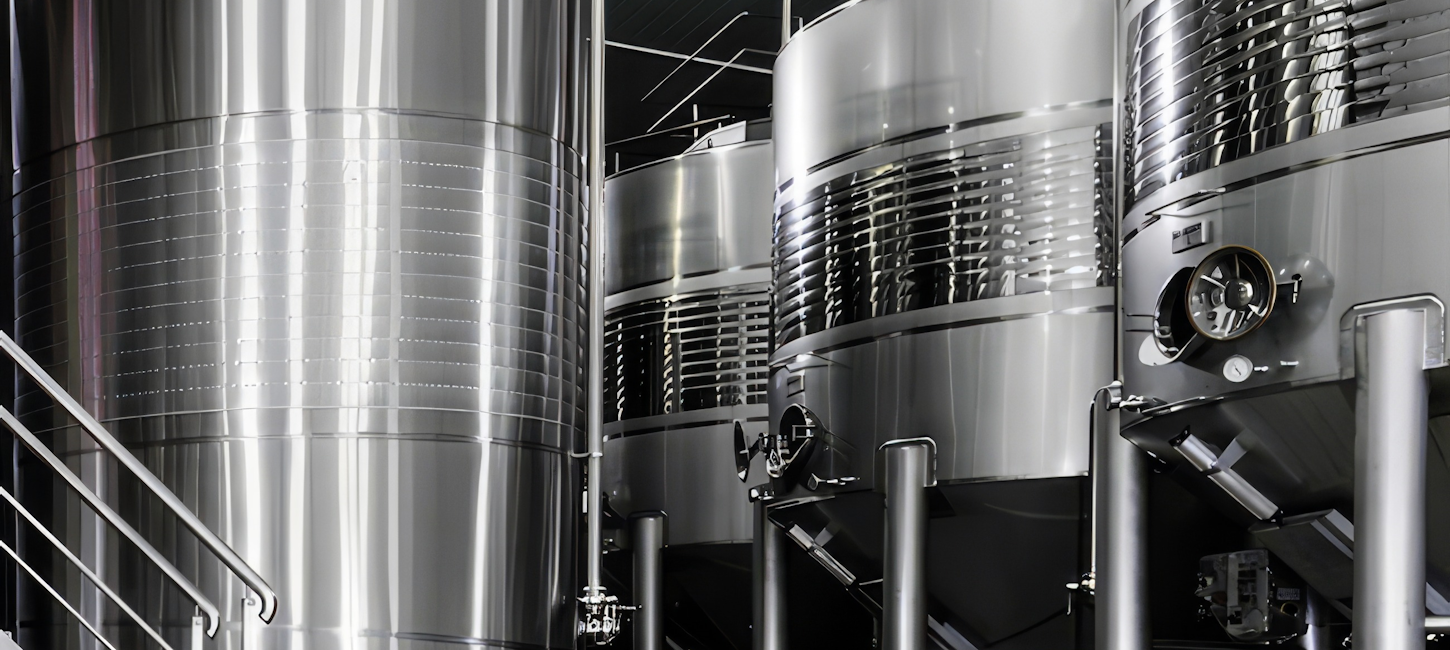
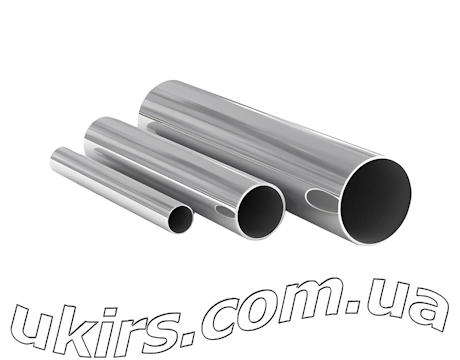 Stainless Steel Round Pipe
Stainless Steel Round Pipe 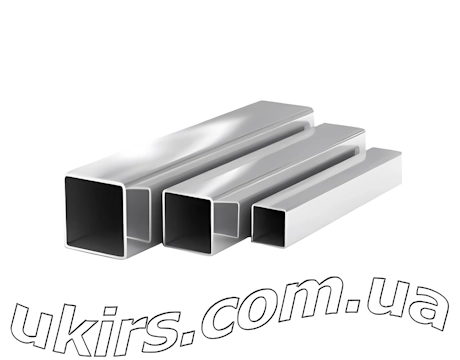 Stainless Steel Square Pipe
Stainless Steel Square Pipe 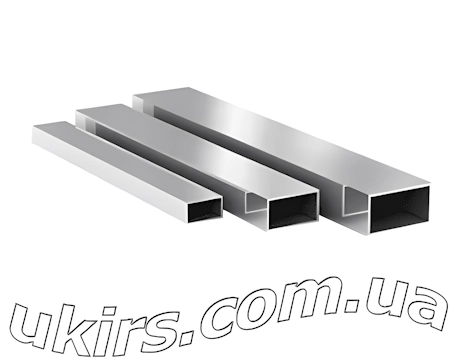 Stainless Steel Rectangular Pipe
Stainless Steel Rectangular Pipe 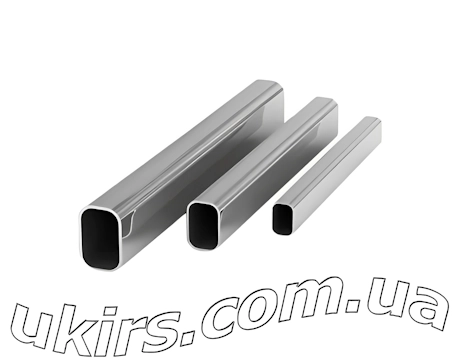 Stainless Steel Oval Pipe
Stainless Steel Oval Pipe 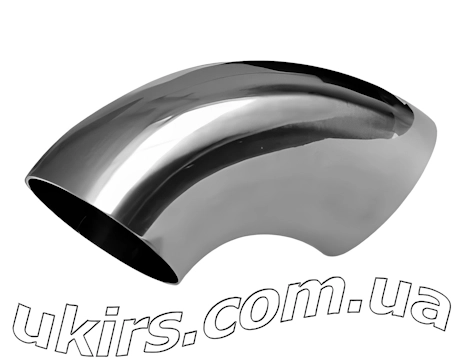 Stainless Steel Elbow
Stainless Steel Elbow 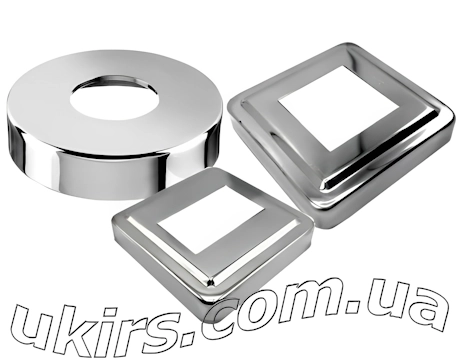 Stainless Steel Decorative Cover
Stainless Steel Decorative Cover  Stainless Steel Flange
Stainless Steel Flange 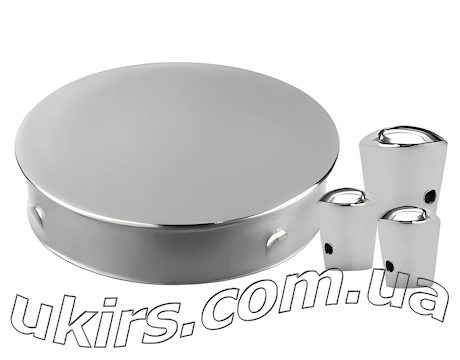 Stainless Steel Plug / Cap
Stainless Steel Plug / Cap  Stainless Steel Handrail Holder
Stainless Steel Handrail Holder